September
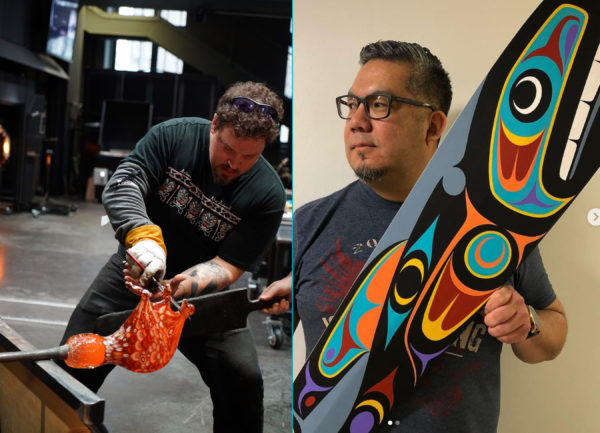 Exhibit Opens First Thursday, Sept. 5rd. 6-8pm. Artist remarks at 7pm.
Exhibit Opens First Thursday, Sept. 5rd. 6-8pm. Artist remarks at 7pm.
Exhibit runs Sept 5-29, 2019. Exhibit installed Sept 3-5.
In September we welcome two Coast Salish artists to the gallery who honor their roots with vibrant, brilliant color and vivacity.
Dan Friday (Lummi Nation) has been working in glass for decades, and makes sculpture informed by the anthropological and historic objects made and used by his ancestors. His “woven” mosaic glass baskets are tributes to the weavers of the Lummi, while his small glass totemic sculptures are a testament to the Lummi totem carvers, including his great-grandfather, Joseph Hillaire. Friday recently won the Audience Choice award at the Bellevue Arts Museum for his mixed-media installation of glass salmon swimming across the walls and up into a woven cedarbark reef net, surrounded by sxwole (reefnet anchors) in blown glass. Learn more about reefnet fishing by scrolling to the bottom of this page, below the artwork.
Maynard Johnny, Jr. (Penelakut/Kwakwaka’wakw) uses bright color and bold design to interpret his dual Salish and Kwakwaka’wakw heritage through his prints, paddles and paintings. He is first and foremost a painter; his designs exhibit clarity, confidence, motion and grace. The ultimate success and transcendence of both Northern and Salish art hinges on an understanding and clarity of line, and this is something he has proven time and time again.
Exhibition Dates:
September 5, 2019 - September 29, 2019Involved Artists:
Featured Works
-
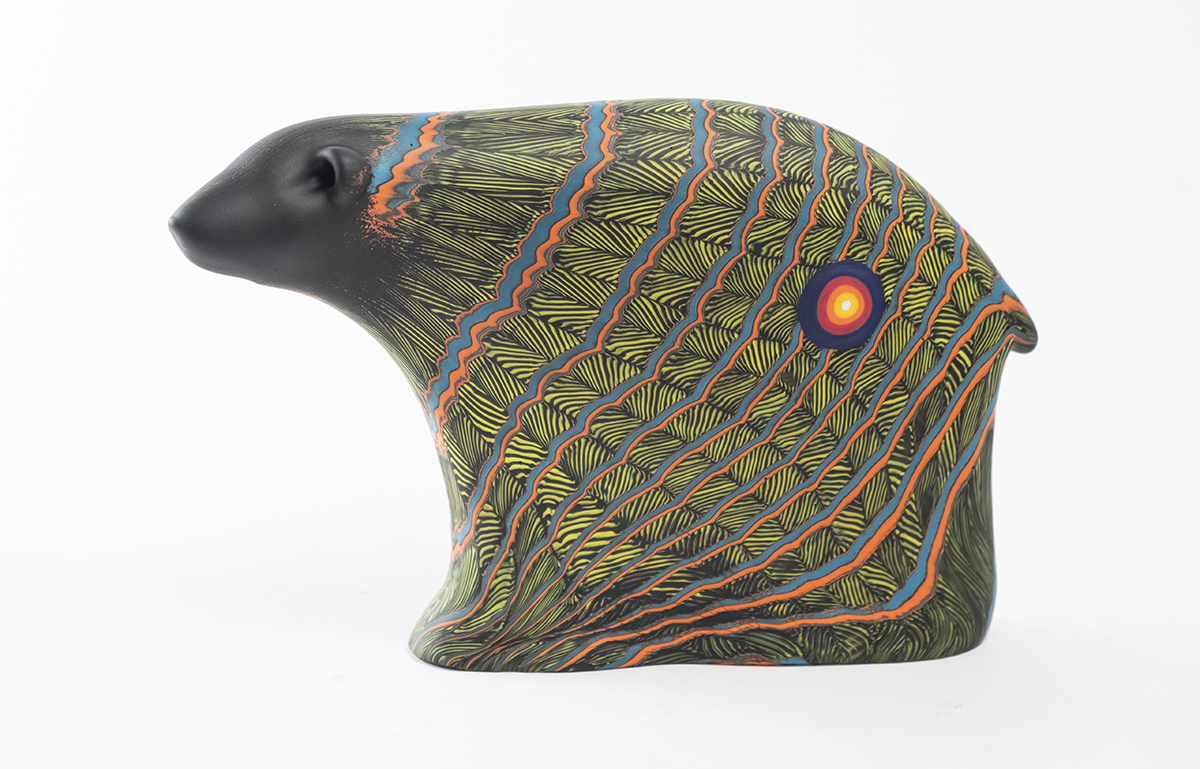 Dan FridayLummi Lightning BearHot-sculpted Glass with Herringbone Cane and Murrine
Dan FridayLummi Lightning BearHot-sculpted Glass with Herringbone Cane and Murrine- 6.5"h
- 10.5"w
- 2.5"d
SOLD -
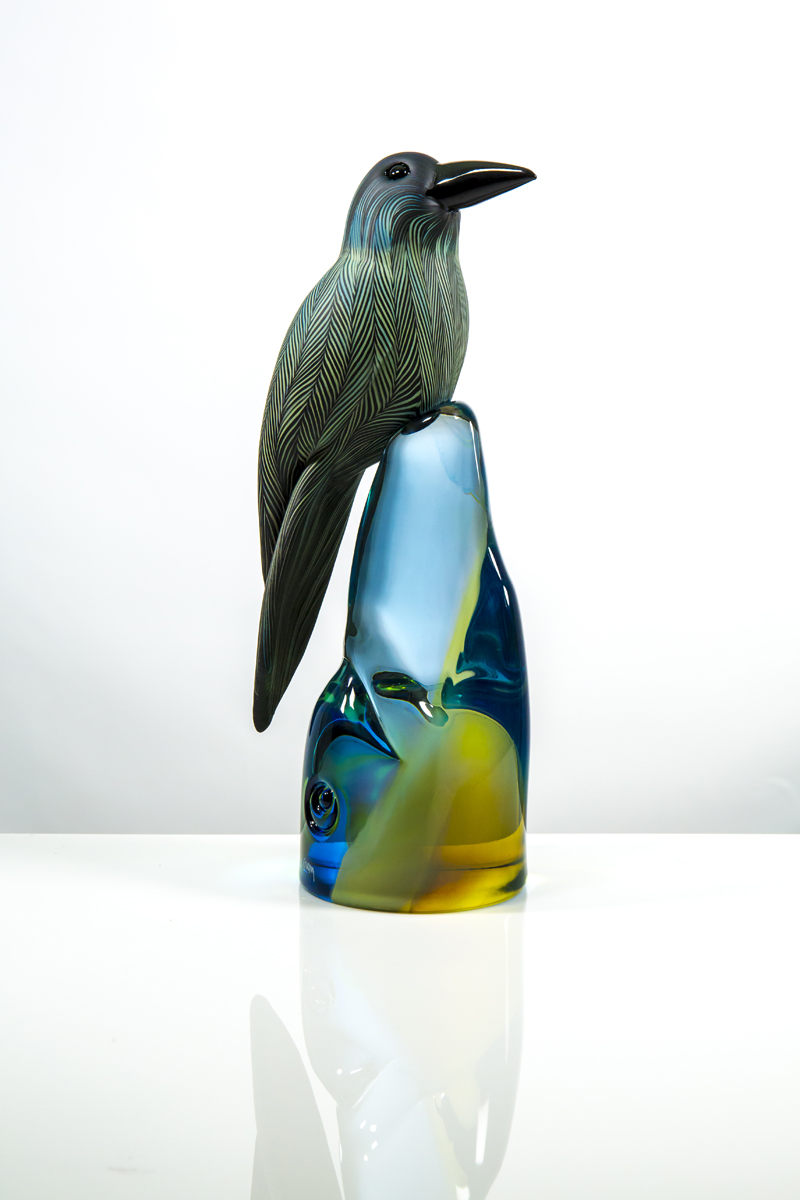 Dan FridayWatcher TotemHotsculpted Glass with Twisted Venetian Cane Technique
Dan FridayWatcher TotemHotsculpted Glass with Twisted Venetian Cane Technique- 12.5"h
- 5"w
- 4"d
SOLD -
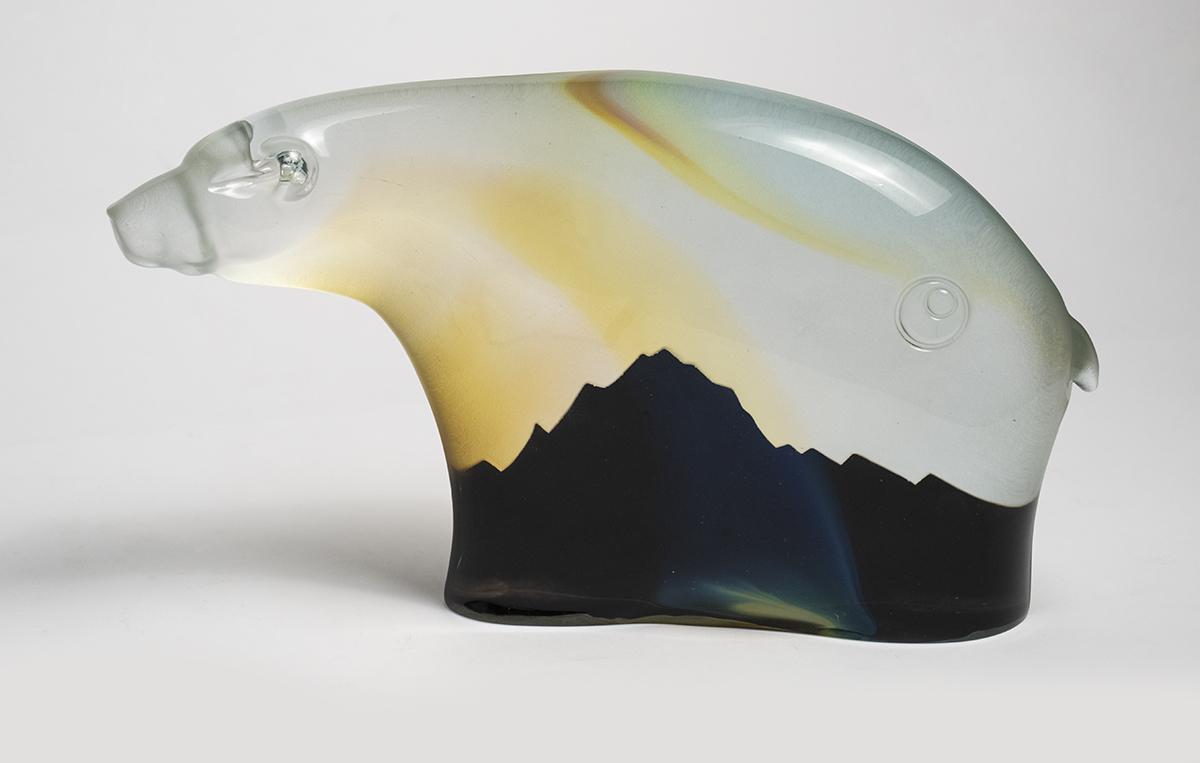 Dan FridayTahoma BearHotsculpted & Sandblasted Glass
Dan FridayTahoma BearHotsculpted & Sandblasted Glass- 7"h
- 12"w
- 3"d
SOLD -
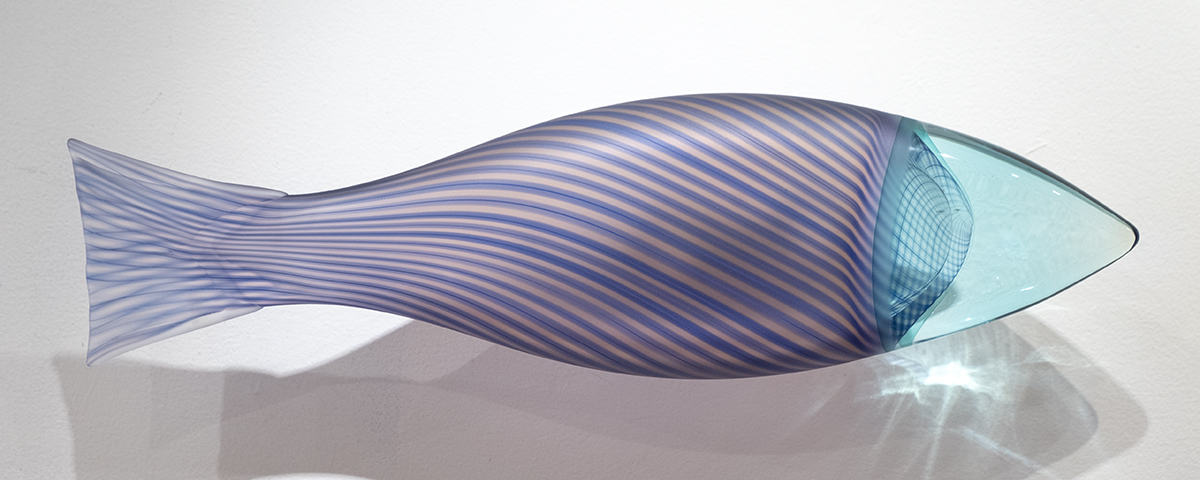 Dan FridaySchaenexw (Salmon) Blueback Series – 8Blown, Hotsculpted and Sandblasted Glass on Wall Mounts
Dan FridaySchaenexw (Salmon) Blueback Series – 8Blown, Hotsculpted and Sandblasted Glass on Wall Mounts- 6.13"h
- 22.75"w
- 4.88"d
SOLD -
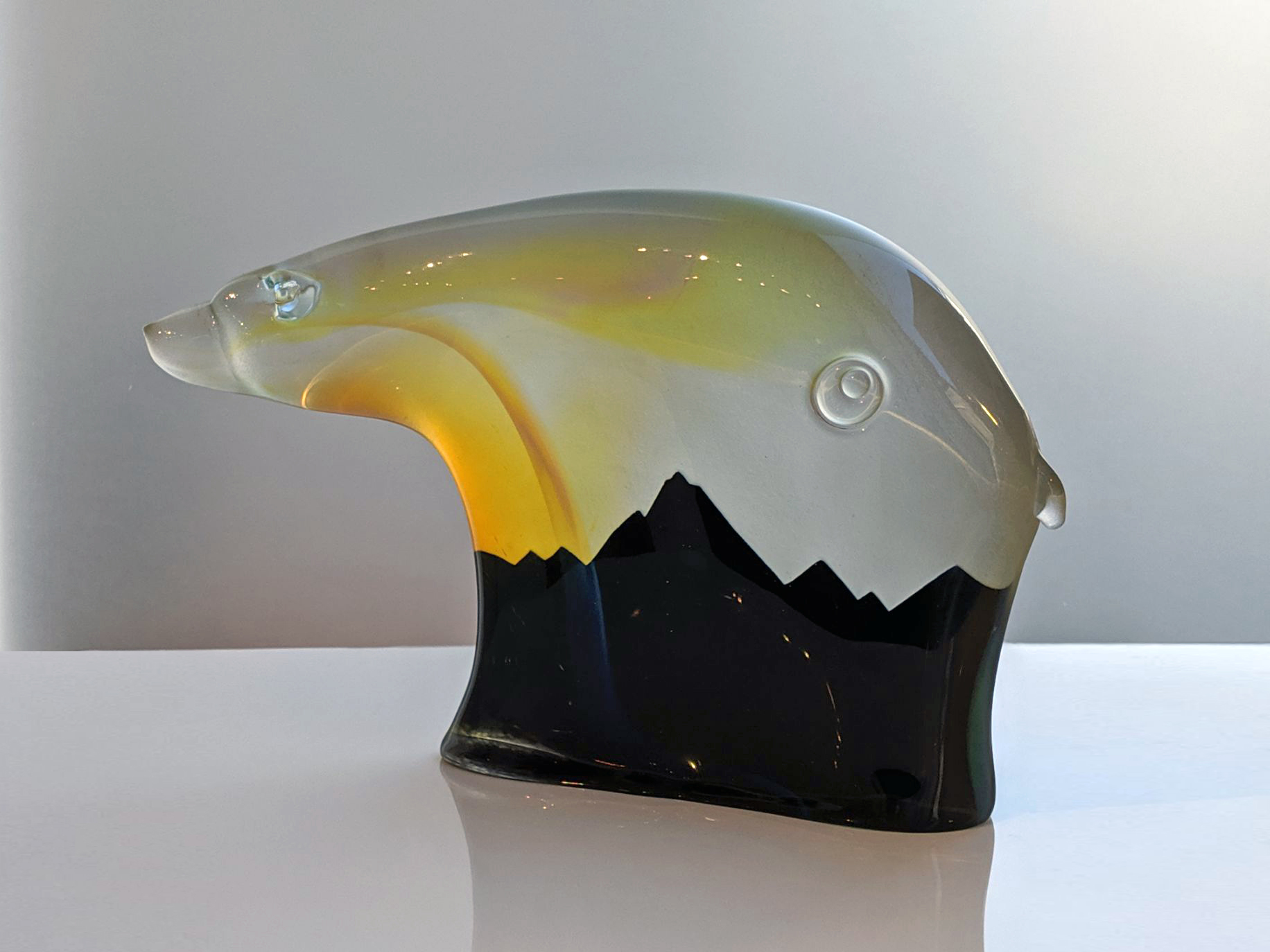 Dan FridayKulshan (Mt. Baker) BearHotsculpted & Sandblasted Glass
Dan FridayKulshan (Mt. Baker) BearHotsculpted & Sandblasted Glass- 8"h
- 12"w
- 3"d
SOLD -
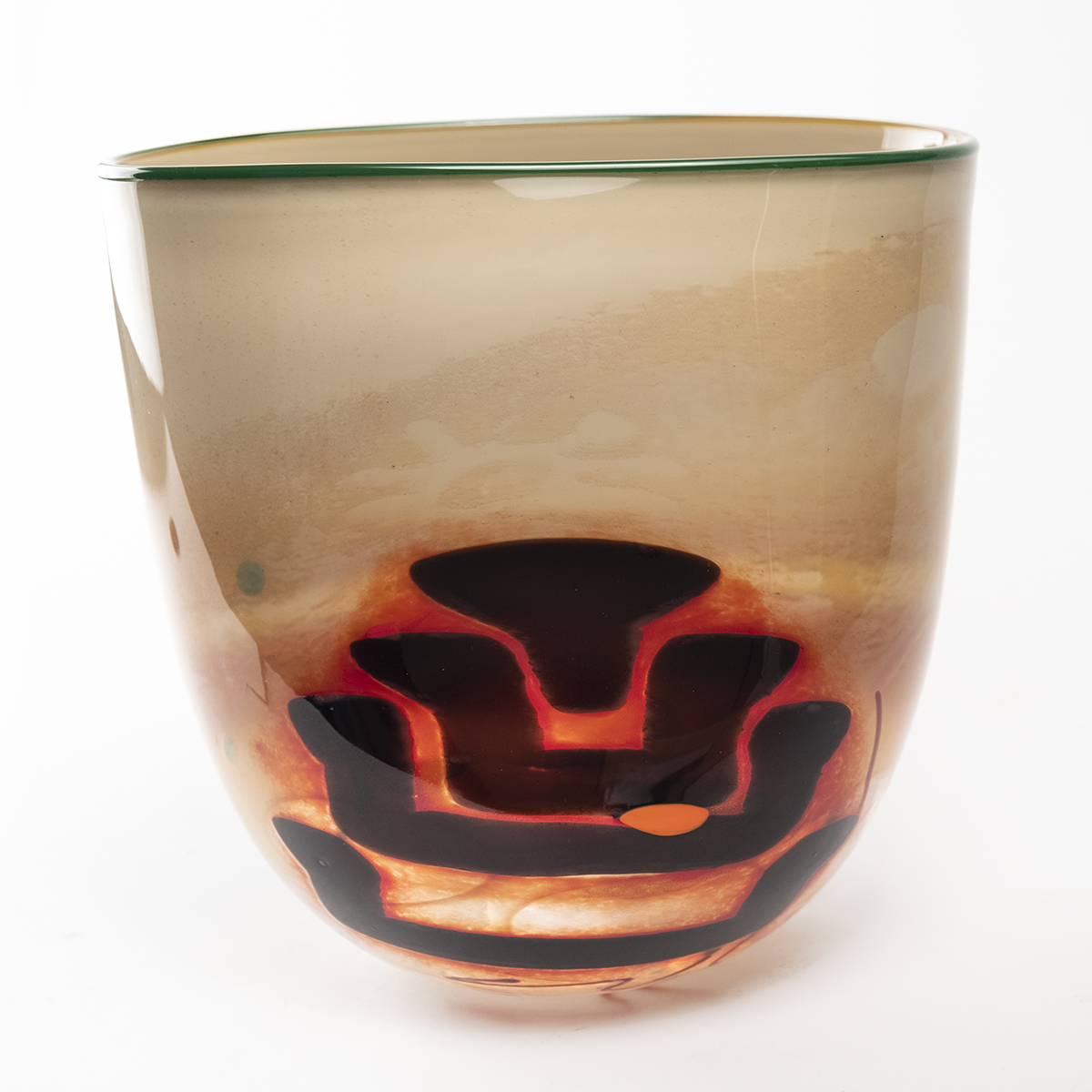 Lillian PittColumbia River Spirits Vessel – Collaboration with Dan FridayBlown and Fused Glass
Lillian PittColumbia River Spirits Vessel – Collaboration with Dan FridayBlown and Fused Glass- 9.75"h
- 10.13"w
- 7.13"d
SOLD -
 Lillian PittShe Who Watches Vessel – Collaboration with Dan FridayBlown, Hotsculpted and Fused Glass
Lillian PittShe Who Watches Vessel – Collaboration with Dan FridayBlown, Hotsculpted and Fused Glass- 8"h
- 8"w
- 6.5"d
SOLD -
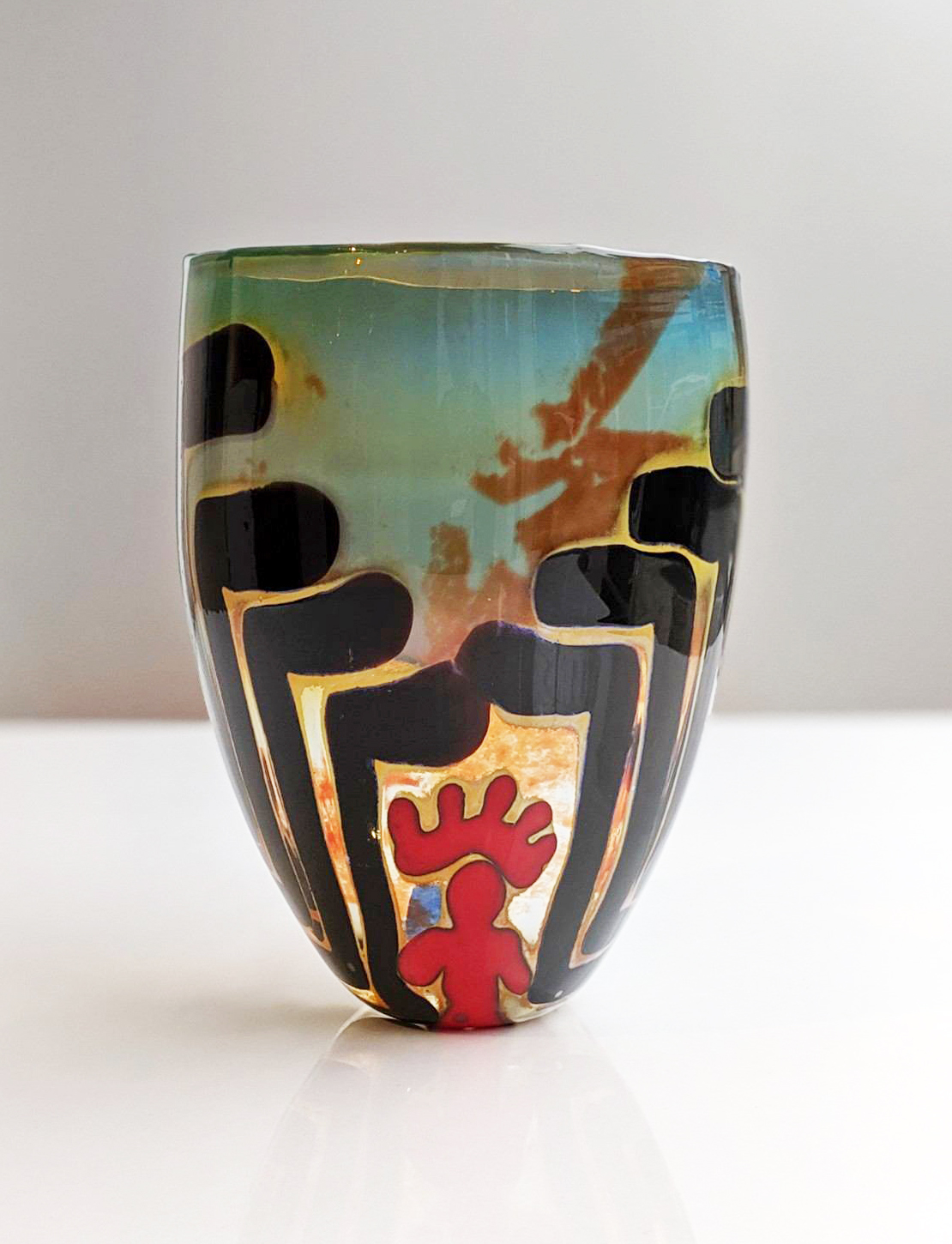 Lillian PittSunshine & Shadow Spirits Vessel – Collaboration with Dan FridayBlown, Hotsculpted and Fused Glass
Lillian PittSunshine & Shadow Spirits Vessel – Collaboration with Dan FridayBlown, Hotsculpted and Fused Glass- 8"h
- 6"w
- 6"d
SOLD -
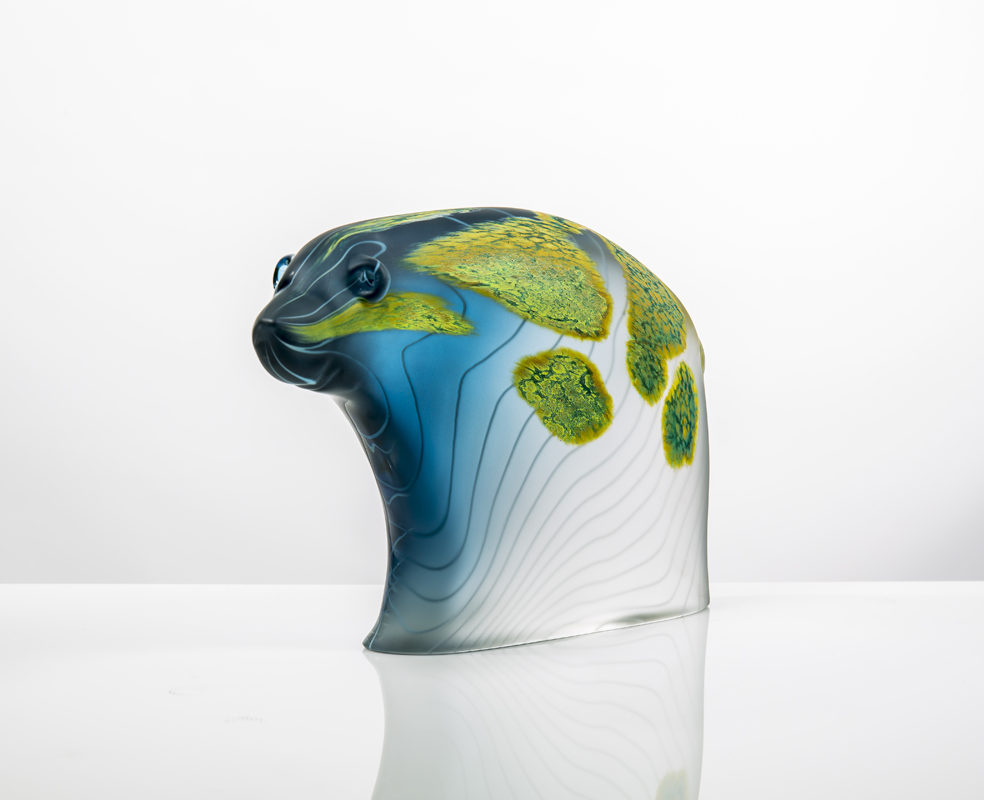 Dan FridaySalish Sea BearHotsculpted, Fused and Sandblasted Glass
Dan FridaySalish Sea BearHotsculpted, Fused and Sandblasted Glass- 7.25"h
- 11.25"w
- 3"d
SOLD -
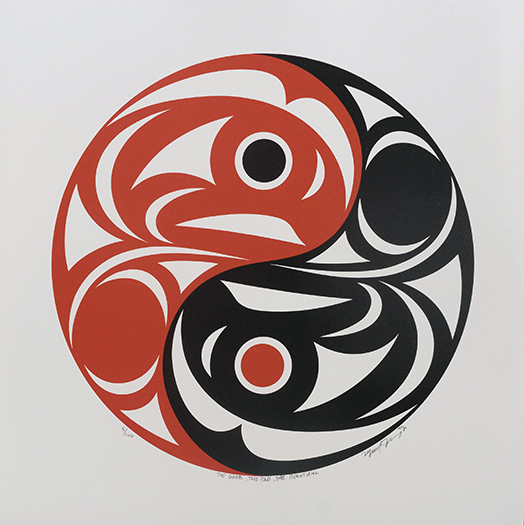 Maynard Johnny, Jr.The Good, The Bad, The BeautifulLimited Edition Serigraph
Maynard Johnny, Jr.The Good, The Bad, The BeautifulLimited Edition Serigraph- 15"h
- 13"w
$250 CAD - Contact Us to Special Order -
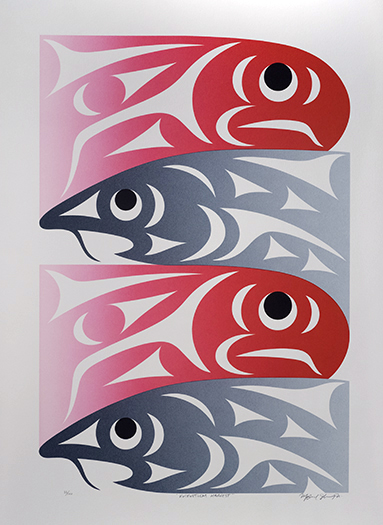 Maynard Johnny, Jr.Kwikwetlem HarvestLimited Edition Serigraph
Maynard Johnny, Jr.Kwikwetlem HarvestLimited Edition Serigraph- 26.25"h
- 19"w
$450 -
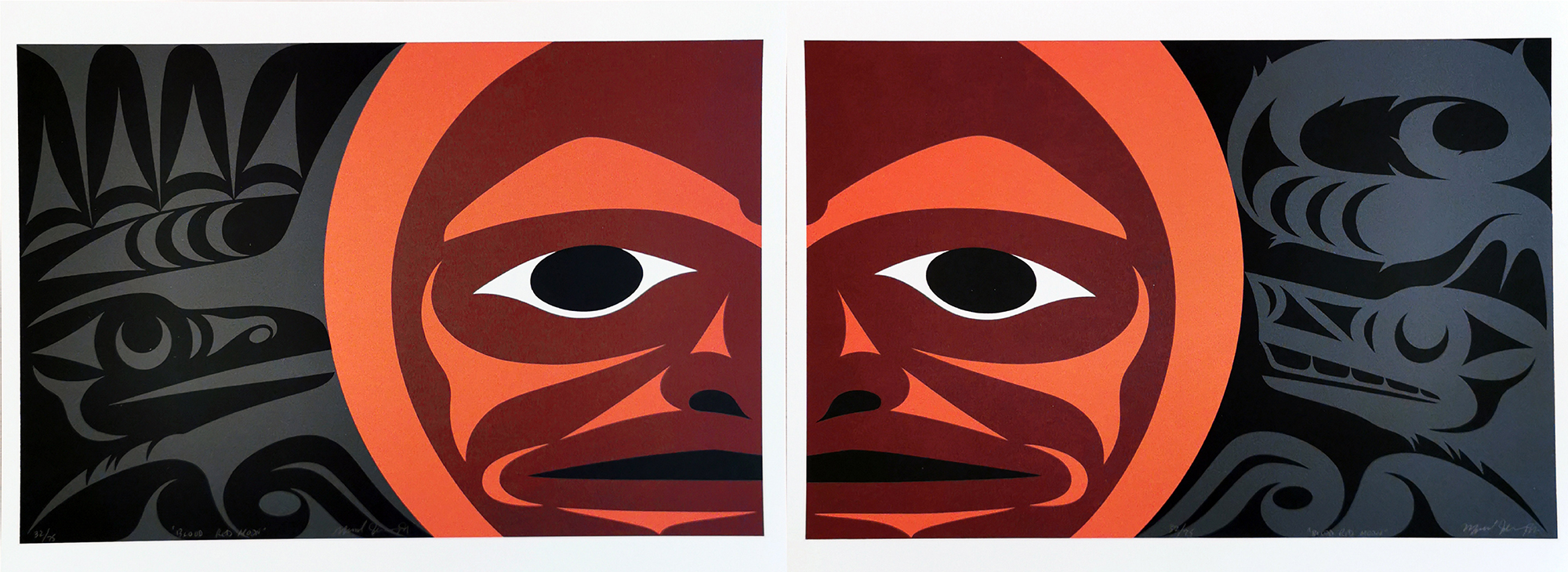 Maynard Johnny, Jr.Blood Red Moon (Diptych)Limited Edition Serigraph, Sold as Pair
Maynard Johnny, Jr.Blood Red Moon (Diptych)Limited Edition Serigraph, Sold as Pair- 14"h
- 19"w
SOLD -
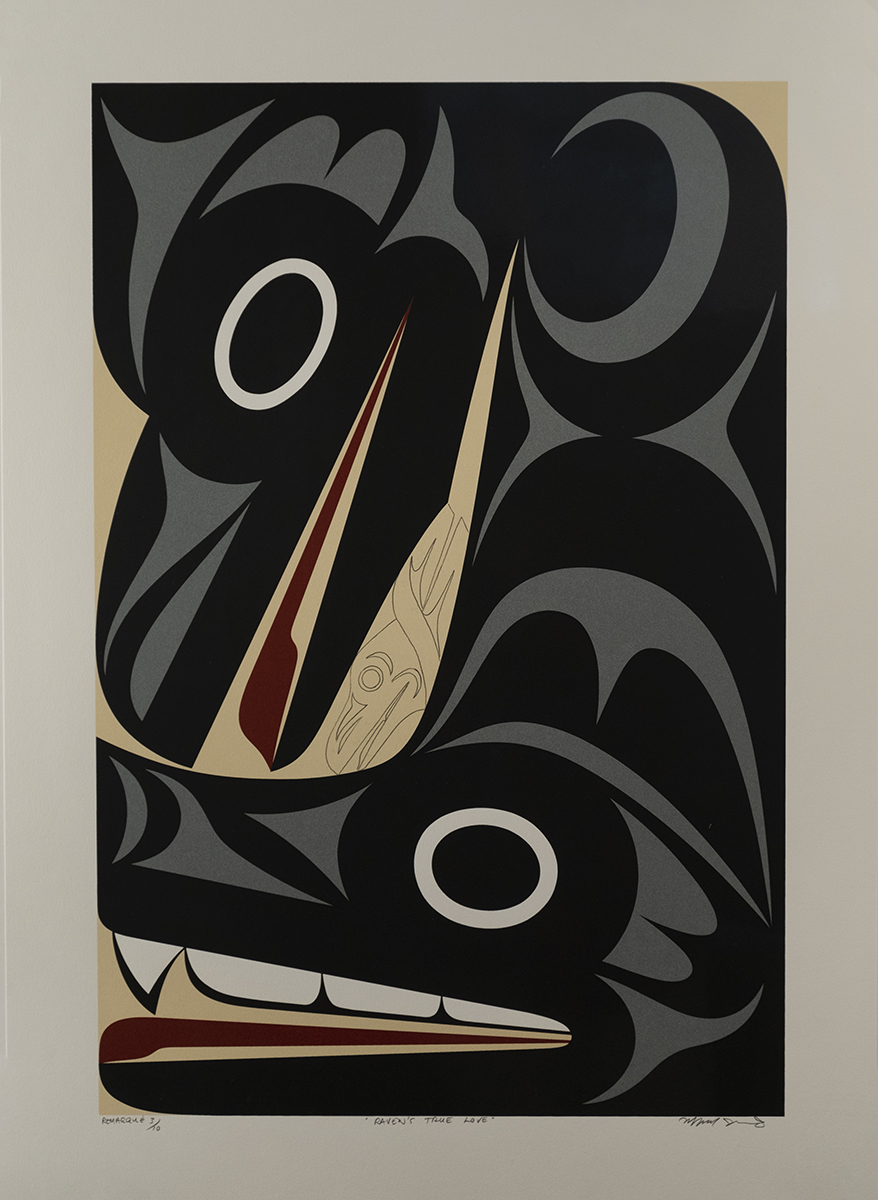 Maynard Johnny, Jr.Raven’s True Love – RemarqueLimited Edition Serigraph, Artist's Proof
Maynard Johnny, Jr.Raven’s True Love – RemarqueLimited Edition Serigraph, Artist's Proof- 26.5"h
- 19"w
SOLD -
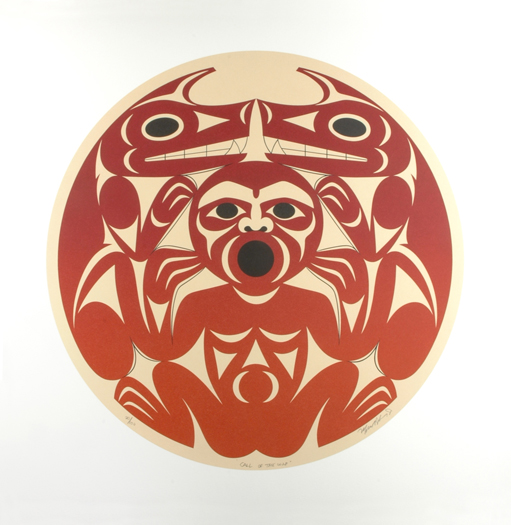 Maynard Johnny, Jr.Call of the WolfLimited Edition Serigraph
Maynard Johnny, Jr.Call of the WolfLimited Edition Serigraph- 22"h
- 22"w
$300 CAD
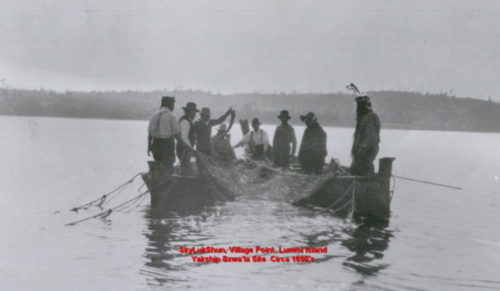
Dan Friday’s salmon run and reefnet anchors continue his focus on the resurgence of reefnet fishing among the Lummi nation. Reefnet fishing an indigenous fishing practice that is one of the most sustainable and humane in the world, but that was almost completely wiped out in the twentieth century.
Reefnetting was spread amongst the tribes around the Salish Sea but was invented by the Lummi. Reefnet fishing was traditionally done by suspending a a sxwole (woven reef net) between two canoes. The ancient reef net, made of the inner bark of cedar, willow saplings, and sometimes nettles, was laid underwater near bottom, and sloped towards the surface. Fishers attached the net to anchors at the upstream end of the surging tide and to the canoes at the other end.
They anchored their canoes at the downstream end and spread the net. Fish
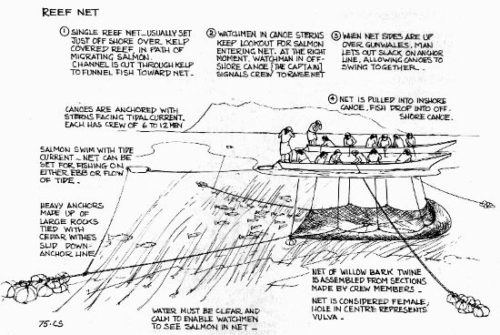
would swim along the bottom, through a path created in kelp, constrained to the sides by reefs and/or islands. On meeting the trellis-like structure, which would be strung with sea grass to create a false bottom, the fish would be gently nudged up to the net proper. When spotters observed salmon swimming into the net, they released the canoes from their anchors and they swung together. Meanwhile, the downstream end of the net was pulled in, followed by the upstream side to trap the fish inside.
Diagram by Hilary Stewart.Once practiced throughout the San Juan Islands, reefnetting now exists only off Lummi Island, and three of the other San Juan Islands. Legislation by the Washington State government in the 1890s banned reef netting within 2400 feet of a fish trap (which were all white-owned), and this effectively banned reefnetting entirely. This devastated the livelihoods of Native families and almost wiped out the practice. The Lummi were pushed out of the islands and onto a reservation outside of Bellingham. Industrial fish–trap operations took over their reef net sites and many Lummi got work in the salmon canneries. A 1934 ban on fish traps in Puget
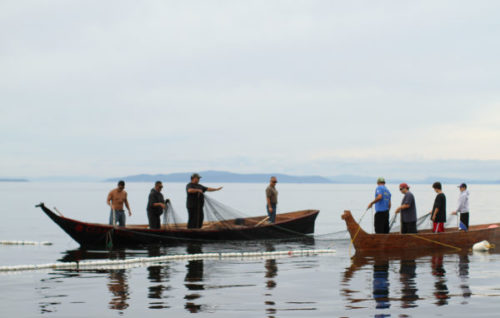
Sound gave tribal fishermen renewed access to their traditional sites, but were crowded out by competition from non-Indian fishermen who were able to reef net in more profitable locations.
Traditional reefnetting has reappeared in a small but significant way, with the Lummi Nation holding their first traditional reefnetting at Cherry Point in 2013 in modern history. Tribal members carved the canoes and wove the nets by hand.
Lummi tribal members reefnet fishing off Xwe’chi’eXen (Cherry Point) in 2013, using traditional methods. Photo by Brad Angerman (Pyramid).“A sxwole (reef net) is a gift from our creator, therefore an inherent right,” said Lummi tribal cultural adiminstrative policy assistant Al Scott Johnnie in 2013. “The sockeye salmon spirit came to our people and showed them how to make the reef net from the willow and other materials that were used from long ago. This was a way of life for our people, and the method was also to allow our sockeye to go up into the river so they could replenish, because they were our extended family.”
